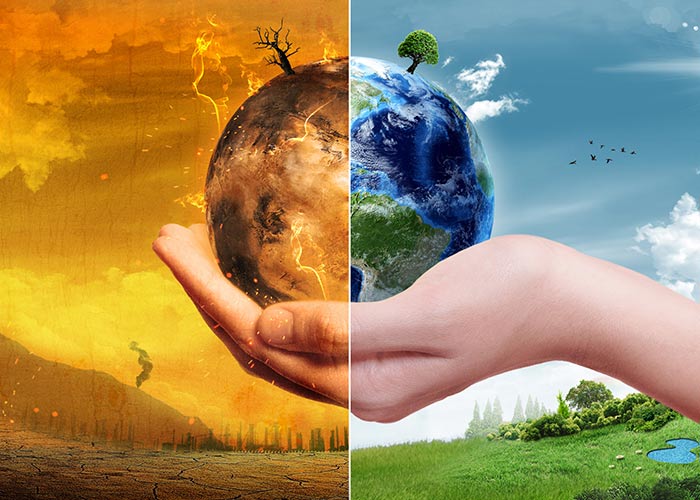According to scientists, up to one-half of the earth’s land mass has been reshaped due to human enterprises. We have been responsible for creating large patches of agricultural fields, deforestation, and building large concrete cities that can be seen from space. This advancement is also responsible for the growing dire state of our planet.

While technology and industrialization have made our lives more convenient and comfortable, we’ve also created enough greenhouse gases in the process to accelerate global warming. As the world’s population continues to grow at a rate faster than any time in history, the concentration of carbon dioxide in the atmosphere will also continue to grow. Scientists expect to see a significant change in the Earth’s climate as well. The effects of climate change are already starting to show and will only become more drastic. Here are a few examples of how climate change and global warming are reshaping our landscape.

- The oceans have been absorbing more than 90% of the additional heat that has been trapped in our atmosphere, causing the Arctic sea ice to decrease more and more every summer. According to a recent report, researchers expect to see ice-free summers by the year 2050. The warming oceans will also affect all marine life, with many species expected to go extinct.
- As more ice melts due to global warming, water levels will increase and coastal regions will change. This will not only change the map as we know it, but it will also destroy cities, coastal wetlands, salt marshes and mangrove forests. Animals like the polar bear and penguin have already seen their numbers severely drop as their habitat and food supply continues to disappear.
- The change in weather patterns have also been affected by global climate change and will have the most visible impact on our everyday lives. We will also experience higher temperatures and an increase in extreme weather, such as droughts, hurricanes and floods.
- The changing temperature is also causing animals and plants to evolve or relocate in order to survive. Every year average temperatures shift closer to the poles about a quarter mile. A study shows that several organisms have already been found up to 4 miles closer to the poles since 1950, or 20 feet higher in elevation every 10 years. Unfortunately, not all animals and plants will be able to keep pace with the current rate of climate change.

 American Geography Portal wants to promote the fascinating world we live in, and also explain why the study of geography is so important and relevant today.
American Geography Portal wants to promote the fascinating world we live in, and also explain why the study of geography is so important and relevant today.



